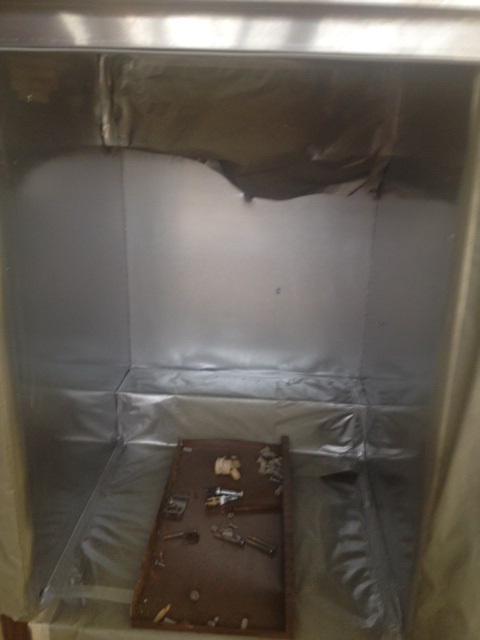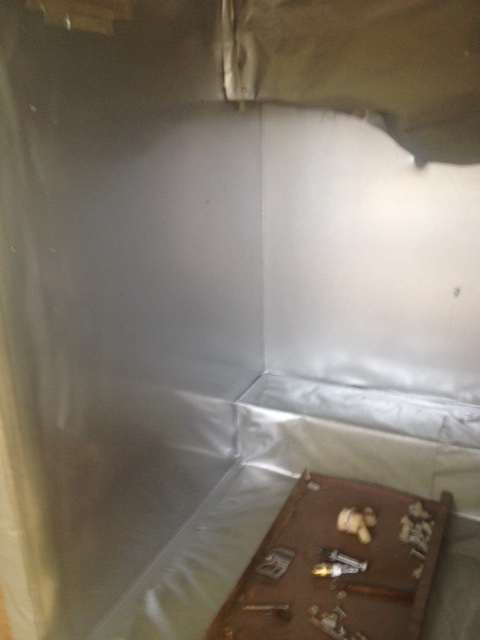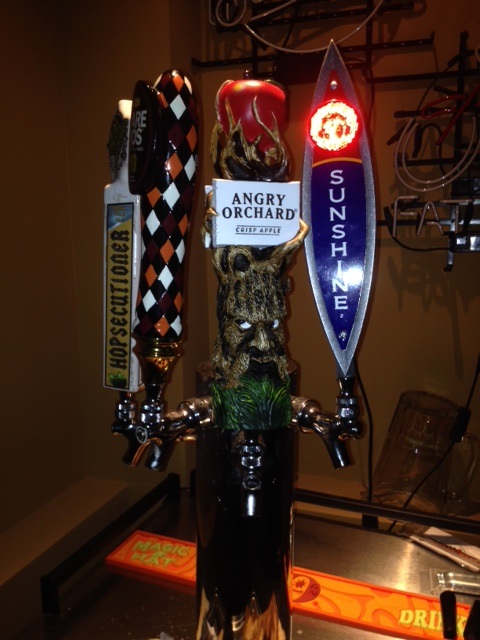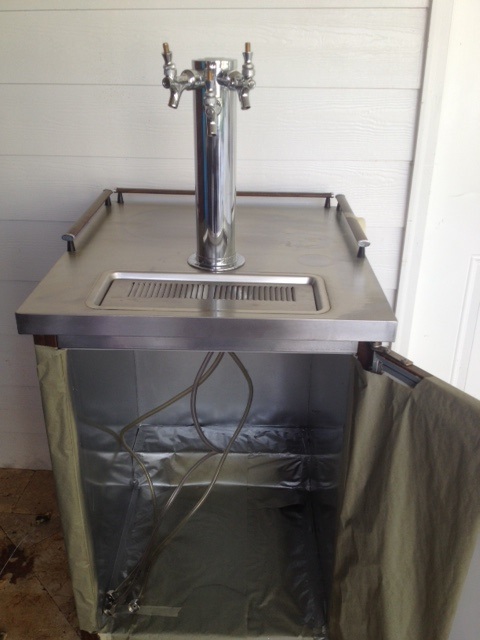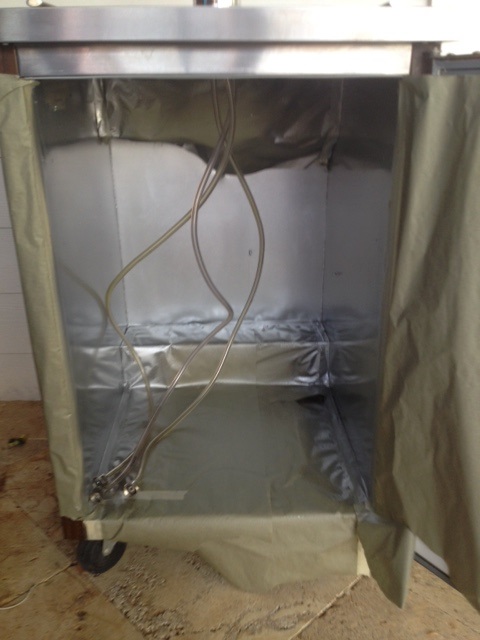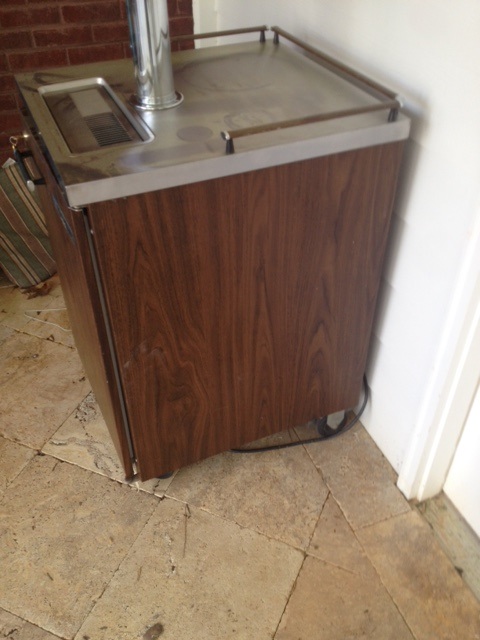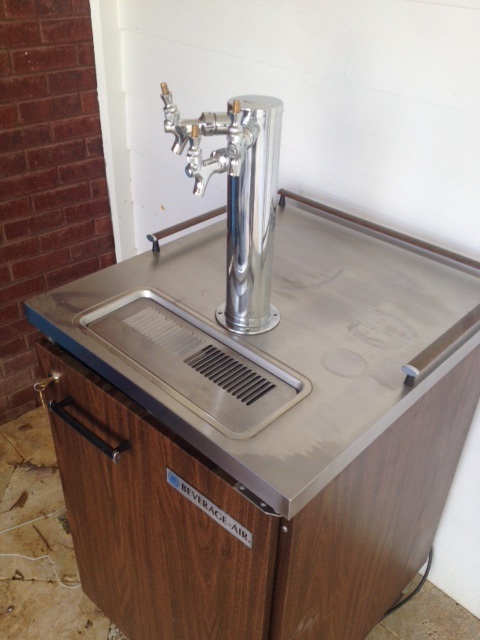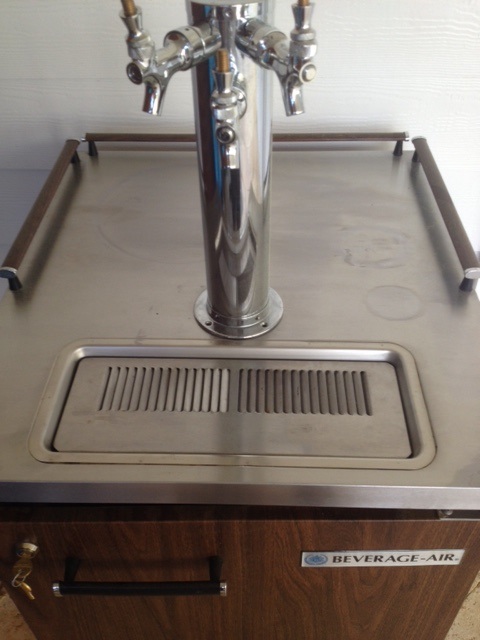Here are the additional photos. My project BM23C seems to be pristine as compared to AMH's project.
Before you spend any money and minimal time on a restoration please take the time to check the health of the compressor. This can be done with a multimeter either analog or digital. On the side of the compressor there will be a place that contains the starter relay, thermal protection and possibly the start capacitor. There are 3 pins on the side of the compressor and you need to take a resistance/continuity reading - common (usually the top pin), loop 1 and loop2. There should be 3 different ohms readings - c to L1 2.9 ohms, c to L2 9 ohms and L1 to L2 11.9 ohms (readings are from my compressor). I also checked the continuity first as my multimeter has a tone for continuity. If the continuity or resistance measurement fails you have a bad compressor. Start looking for another project.
Next look for the signs of a refrigerant leak - wet oily spots, new shinny spots on the copper, corrosion of the copper components and refrigerant recharge ports. Most refrigerators do not have installed recharge ports. If it does then it has likely been recharged. It may have a slow leak. Any compressor from 1994 or older is using R12 refrigerant and it is quite expensive to recharge since it was outlawed in 1994. Conversion to a newer refrigerant is expensive also.
If everything checks out then proceed to see if the unit cools making sure all fans are working. Check the thermostat by setting it to the warmest and turn to coldest while plugged in. You should here the compressor kick on. If not you may have a bad starter relay or capacitor. Be careful with the capacitors as they can hold voltage for quite some time. I do not recommend shorting across the capacitor terminals as I have seen that ruin perfectly good capacitors. Let it sit or ground 1 leg of the capacitor to ground.
To test cooling the best way is to place a 5 gal bucket of water in the kegerator and let it run and take temp measurements at set periods of time 1hr, 2hr, 3hr to see if it is cooling properly. If it does not get cold enough (34 - 38) you may have a bad thermostat. There should be minimal to no frost build up on the external components while the compressor is running. If there is you may have a low refrigerant problem.
Also when transporting any refrigerator or freezer try to keep it upright. If it has to be transported on its side let it sit for at least 24hrs in an upright position. There are several things that can and do happen - oil can flow out of the compressor into other areas of the system and debris can be carried into other parts causing a failure. For instance debris can enter the capillary tube or dryer tube thereby blocking the flow of refrigerants and now you have a costly repair job.











































![Craft A Brew - Safale S-04 Dry Yeast - Fermentis - English Ale Dry Yeast - For English and American Ales and Hard Apple Ciders - Ingredients for Home Brewing - Beer Making Supplies - [1 Pack]](https://m.media-amazon.com/images/I/41fVGNh6JfL._SL500_.jpg)













